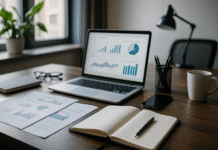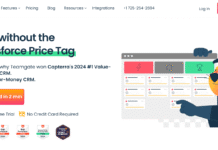Freerange Review: The Ultimate Guide to Free, High-Quality Stock Photos
Introduction
In today’s digital ecosystem, visuals play a vital role in communication, marketing, and design. Businesses, creators, and educators rely on high-quality images to strengthen their messages and enhance the visual appeal of their projects. However, not everyone has the resources to purchase expensive stock photography or hire professional photographers. This challenge has encouraged the rise of free stock image platforms, which offer access to large collections of photos under generous licensing terms. Among these platforms, Freerange stands out as a reputable and sustainable source for professional-grade photography available for both commercial and personal use.
Freerange provides an accessible solution for individuals and organizations looking for legally safe, visually strong, and royalty-free images. The platform combines its own in-house content with user-generated submissions to create a diverse, high-resolution library of photographs. Its clear licensing terms and long-standing reputation make it a trusted choice for bloggers, graphic designers, and marketing professionals.
This article provides a comprehensive overview of Freerange, explaining what it is, how it works, and what makes it unique in the competitive world of free stock image websites. It will also guide you through its licensing rules, main features, and best-use scenarios so that you can decide whether Freerange suits your creative needs.
What is Freerange
Freerange is a free stock photo platform that offers high-quality images for download and use without licensing fees. It was launched in 2007 with the mission to make professional photography accessible to everyone. The platform’s founders aimed to eliminate barriers between creators and resources by providing photos that can be used freely for commercial or non-commercial projects.
Unlike many other platforms, Freerange does not rely solely on user uploads. A significant portion of its image collection is produced by in-house photographers, ensuring consistent quality and originality. Over time, it has built a strong community of contributors and users, creating an ecosystem that balances accessibility with professional standards.
Freerange’s main advantage lies in its simplicity. Once a user registers for a free account, they gain access to thousands of downloadable images. The site interface is intuitive, allowing users to browse by category, keyword, or popularity. Whether someone is designing a website, producing social media content, or building marketing materials, Freerange offers a dependable repository of images that meet creative and legal standards.
For users seeking additional creative tools, Freerange is also featured among useful resources in the tools section of Startupik, where digital professionals can discover complementary platforms to enhance their workflow.
Key Features of Freerange
Freerange is distinguished by several core features that make it attractive to designers, writers, and marketers.
1. High-quality imagery: The platform ensures a professional standard for every uploaded photo. The minimum resolution typically exceeds 2400 × 1600 pixels, making the images suitable for both print and digital applications.
2. Completely free access: Every registered user can download photos without any subscription fee or watermark restrictions. The concept of “free” in Freerange is genuine, with no hidden costs or premium tiers blocking access to essential resources.
3. Commercial use allowed: Freerange permits users to utilize its images for business projects, advertisements, websites, and print materials. The commercial-use license is clearly stated, eliminating ambiguity about copyright infringement.
4. No attribution required: While giving credit to photographers is appreciated, it is not mandatory. This freedom simplifies content creation for agencies and companies that require quick deployment of media materials.
5. Diverse categories: Freerange organizes its library into thematic collections such as nature, business, lifestyle, technology, architecture, and food. This categorization supports efficient searching and ensures that users can quickly locate relevant visuals.
6. Contributor program: Photographers can join Freerange as contributors, submit their work, and earn revenue through advertising shares. This model creates a mutually beneficial relationship where creators gain exposure, and the platform expands its collection.
7. Regular updates: The image database grows continuously, ensuring fresh and modern content that reflects current design trends.
Collectively, these features make Freerange a reliable and evolving source of creative materials, balancing user convenience with ethical and professional standards.
How Freerange Works
Using Freerange is straightforward and accessible even for beginners. The platform operates on a model that blends open access with minimal administrative requirements.
Account creation: To download images, users must first create a free account. Registration requires only a valid email address and a password. Once the account is active, users can immediately browse and download photos.
Browsing and searching: Freerange offers a powerful search engine that allows keyword-based exploration across thousands of photos. Categories and tags help refine results, while the homepage displays the newest and most popular uploads.
Image selection and download: When a user selects an image, they can view detailed information including resolution, category, and photographer name. The download button provides direct access to the high-resolution version, usually in JPEG format.
Uploading and contribution: For photographers, Freerange provides an opportunity to submit original photos. Submitted images undergo a review process to ensure technical and aesthetic quality. Once approved, they become part of the public library, and contributors may benefit from shared advertising revenue.
Quality control: Freerange maintains high technical standards. The review process involves checking exposure, composition, and resolution to maintain the platform’s reputation for professional-grade imagery.
Licensing integration: Each image comes with a clear description of its usage rights, helping users confirm that the photo can be safely used for their intended purpose.
Through this combination of accessibility and control, Freerange ensures that its users enjoy both freedom and security when downloading or sharing visual content.
Licensing and Legal Aspects
Understanding the legal framework of Freerange is essential for any user who plans to use its images in public or commercial projects. The platform’s license is designed to be simple yet comprehensive, protecting both photographers and users.
Freerange operates under a proprietary license that grants permission for broad use. Users may copy, distribute, and modify images from the site for personal or business purposes without paying royalties or seeking additional permissions. This structure provides the benefits of a royalty-free model, ensuring that users can use the content across various media platforms including websites, advertisements, educational materials, and print campaigns.
However, while Freerange allows modification and reuse, certain restrictions apply to prevent misuse. Users are not permitted to resell, redistribute, or claim ownership of the images as standalone products. For example, uploading a Freerange image to another stock site or selling it as part of a photo package would violate the terms of service.
When people or recognizable property appear in a photo, Freerange requires that a valid model or property release be attached to the file. This ensures that the depicted subjects have granted consent for commercial use. Users are advised to review the accompanying metadata or image description to confirm that such releases are included, especially for advertising or corporate purposes.
Additionally, Freerange discourages the use of its images in contexts that could be defamatory, obscene, or misleading. Users should not employ images in ways that suggest endorsement by the depicted individuals or entities. The platform’s terms emphasize ethical use as a condition of access.
Freerange’s legal transparency distinguishes it from many free image sources that rely on ambiguous Creative Commons licenses. By offering a clearly defined policy, it minimizes the legal uncertainty that can arise when using free visual content.
For designers, content creators, and business owners, understanding and following these rules ensures compliance and maintains professional integrity. This structure contributes to the platform’s credibility and encourages responsible sharing within the creative community.
Using the Platform Effectively
To use this stock photo platform efficiently, users should understand both its technical workflow and creative potential. Although the service is designed to be simple, a strategic approach helps extract maximum value from the available resources.
Building a consistent visual identity is one of the first steps for designers and marketers. The collection covers a wide range of themes, from nature to business and lifestyle imagery. Choosing photos that match a project’s tone strengthens its message and enhances audience engagement.
The search feature responds best to specific keywords. Combining descriptive terms such as “urban landscape,” “team collaboration,” or “digital workspace” refines results and improves relevance. Using synonyms can also broaden the creative selection.
Before downloading, users should check each photo’s resolution and framing. Large images are ideal for print materials, while smaller files suit online projects. The platform provides detailed metadata, allowing quick assessment of image quality.
Basic editing further improves results. Adjusting brightness, cropping, or color balance helps match a brand’s visual style. Since the site’s license allows modification, users can confidently tailor images for different formats and campaigns.
Organizing downloaded content into folders or libraries ensures efficiency, especially for agencies managing multiple brands. Consistent file management reduces redundancy and improves collaboration within creative teams.
By combining these habits, individuals and companies can turn a simple free image resource into a strategic design and communication tool.
Advantages and Disadvantages
Every stock photo source has strengths and limitations. Recognizing both helps users decide how to integrate it into their creative process.
Advantages:
-
Completely free access without watermarks or subscription fees.
-
Permission for both commercial and personal use under clear terms.
-
High-resolution files suitable for print and digital media.
-
Simple navigation and structured categories for quick search.
-
Legally verified content with proper review standards.
-
Opportunities for photographers to share and monetize their work through ad impressions.
Disadvantages:
-
Smaller catalog compared with paid competitors.
-
Repetition in certain themes, which may limit diversity.
-
Requires account registration before downloading.
-
Lacks additional media types such as video or vector graphics.
Overall, it offers a valuable balance of accessibility and professional quality, particularly for freelancers, educators, and startups.
Comparison with Other Image Platforms
When placed alongside other stock photo websites, this service demonstrates a distinct position between free and paid ecosystems.
Compared with Unsplash, it maintains more consistent quality control through an internal review process. Unsplash, by contrast, depends largely on community submissions with artistic diversity but variable resolution.
In relation to Pexels, the main difference lies in the type of content. Pexels provides photos and videos, whereas this platform focuses purely on still photography. It also offers clearer legal descriptions regarding commercial use, reducing uncertainty about copyrights.
Against Pixabay, it distinguishes itself through realistic, unedited imagery suitable for authentic marketing visuals. Pixabay’s large multimedia archive is more varied, but its quality fluctuates across categories.
When compared with subscription-based services like Shutterstock or Adobe Stock, the contrast is primarily about scale. Paid platforms feature extensive libraries and exclusive content, while this free source delivers reliability at no cost. For small businesses or independent creators, the economic advantage is often decisive.
These comparisons underline its unique role: a bridge between open community networks and professional image markets. It provides a dependable alternative for users who require clarity and quality without financial investment.
Best Practices and Professional Tips
Adopting proper usage habits ensures long-term benefits and compliance with licensing terms.
-
Review the image description and confirm that any recognizable individuals or properties have appropriate releases before commercial use.
-
Maintain a record of downloaded files with links and dates to document licensing history.
-
Combine photos from this platform with professional editing tools to enhance lighting and composition.
-
Choose visuals that differ from overused stock imagery to maintain originality.
-
Respect ethical standards by avoiding sensitive or misleading contexts.
-
Explore complementary creative resources such as those listed in the tools section of Startupik to expand project capabilities.
These best practices help designers and marketers apply free resources responsibly while maintaining quality and brand integrity.
Final Conclusion
This platform has earned recognition as a dependable source of free stock photography. Its combination of accessibility, clear licensing, and consistent image quality makes it valuable for diverse creative professionals.
By providing free access without complicated restrictions, it solves a major challenge for those who need reliable visuals but cannot allocate large budgets. Its licensing framework ensures safety and clarity, allowing both individuals and organizations to use and modify photos confidently for commercial or personal goals.
While the total image library is smaller than premium services, the balance between usability and legality gives it a lasting advantage. The curated collection emphasizes authenticity, avoiding overly stylized or artificial compositions that often dominate commercial databases.
For marketers, educators, web designers, and small enterprises, it serves as a foundation for building strong visual communication. The ongoing contribution of photographers and the platform’s review standards keep the library fresh and relevant.
In an era where imagery defines digital identity, free and legally secure photo sources are essential. This platform fulfills that need by offering professional-grade photography that supports creativity, compliance, and accessibility. It remains one of the most practical and ethical choices for anyone seeking quality visuals without financial barriers.












































